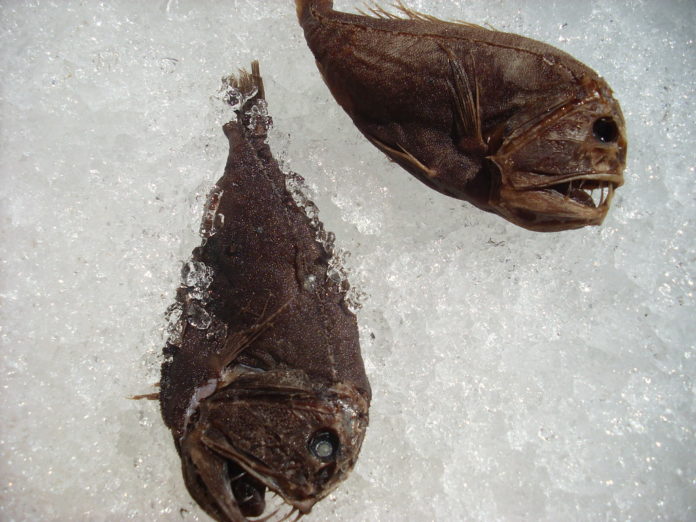If you are frightened by the simple small blue and yellow fish on the ocean floor, you are not the ideal candidate for deep-sea diving. Why? Why? Because there are many animal species you would probably never want to meet without good travel insurance!
18. Vampire squid
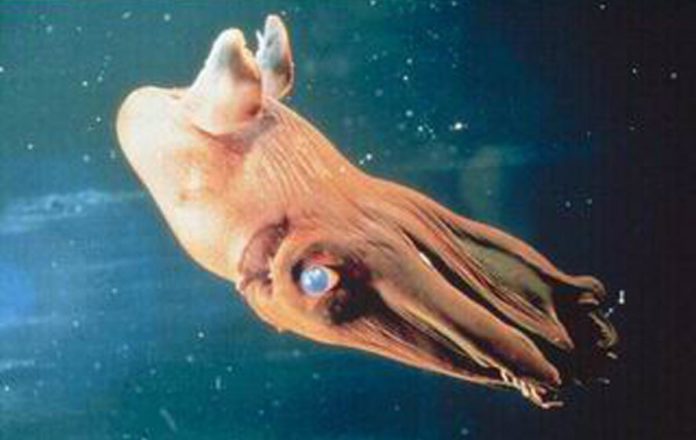
The vampire squid is named after the dark webbing it has round its arms, which it can wrap around itself like a cloak. Living down at 3000 meters below the surface, there’s very little light to be had, but it makes the most of it with eyes which are, in proportion to its body, larger than any other creature on the planet. Living in the mesopelagic and bathypelagic zones of temperate and tropical oceans, it has adapted to survive on the very low levels of oxygen existing in these areas.
17. Deep-sea Dragonfish
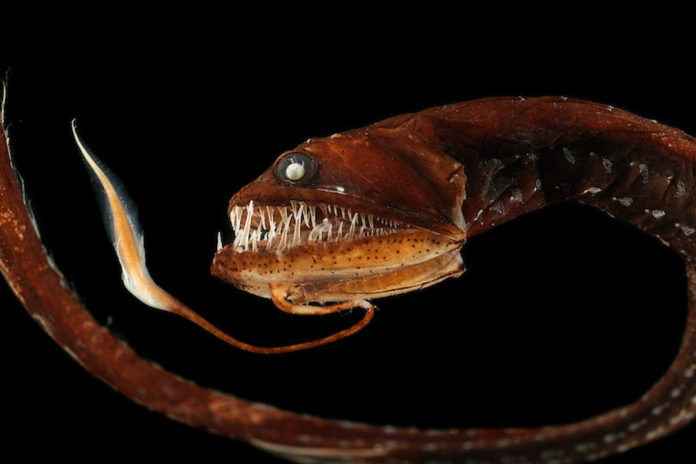
Living as deep as 5000 meters in the Atlantic Ocean, without plant life, light, or any currents, the dragonfish copes with the darkness by producing its own light through special organs called photophores that lure its prey in. If that wasn’t evolutionarily weird enough, it also has some vertebrae in its spine missing so that its head is more flexible, allowing it to feed on prey larger than itself.
16. Lamprey
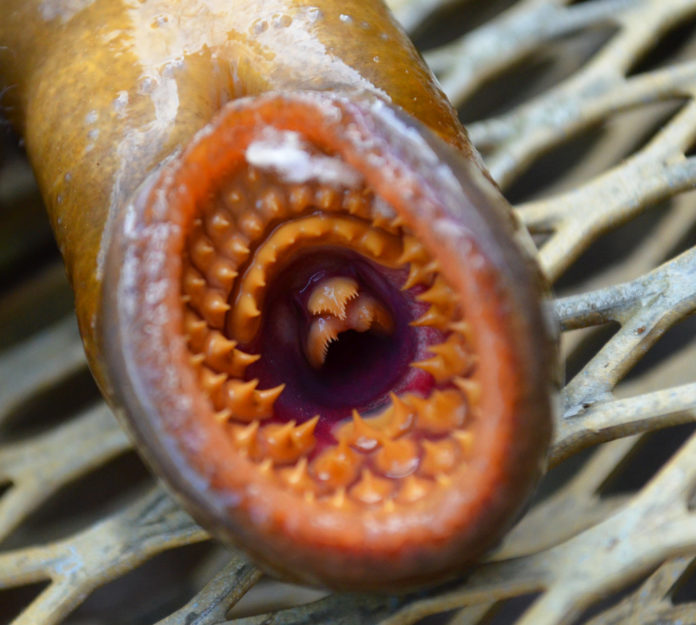
The lamprey is basically a long tube with teeth at one end, letting it rip into anything. Some of the carnivorous species specialize in boring into the sides of other fish and feeding that way. If you want to avoid these nightmares, stay away from the Great Lakes and the Atlantic Ocean where they make their home.
15. Chimaera
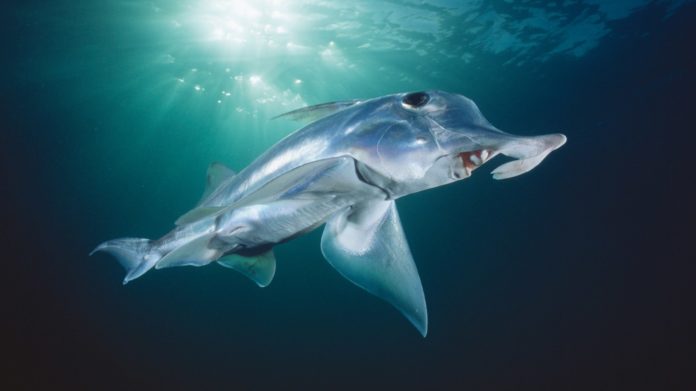
Scientific name: Chimaeriformes
Inhabiting the ocean floors, the chimaera is also known as the ghost shark. Science knows very little about these creatures, with the first pictures and video of them only being taken recently. The strange lines like stitches running along the fish’s sides are in fact sense organs that can pick up movement and vibration in water.
14. Giant squid
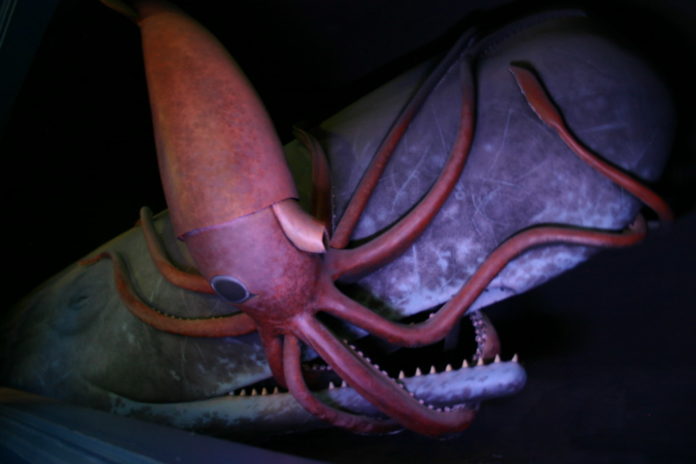
There are some astonishing creatures inhabiting the deep ocean, and the giant squid is certainly one of them. Because of an effect named deep-sea gigantism, giant squid can grow to an amazing size which enables it to be one of the sea’s most effective predators. It attacks its prey by wrapping its long tentacles around them and attaching its amazingly strong suction cups, then using its beak that can cut through the toughest skin. Its size and strength have been shown by the scars found on some sperm whales that have been lucky enough to get into a battle with one. Fortunately for humans, it generally lives at a depth where we don’t swim, but just knowing you’re sharing an ocean with them is scary enough.
13. Sea spider
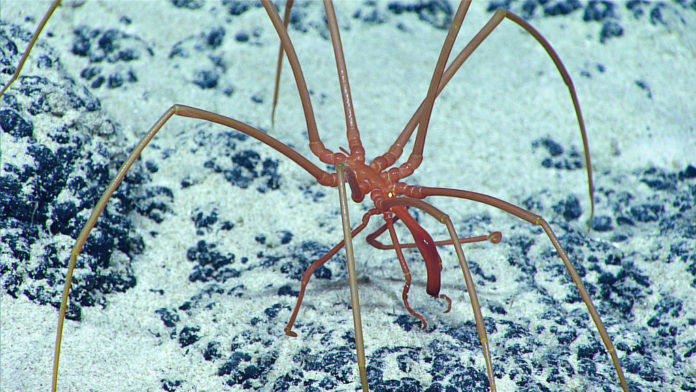
Scientific name: Pycnogonida
More than 1300 species of sea spiders inhabit the world’s oceans, ranging from the shallowest shoals to depths of up to 7000 m, ranging in size from 1 mm across to an arachnophobe’s nightmare 25 cm leg span – and if that doesn’t creep you out, it has a proboscis that allows it to suck nutrients out from inside its prey.
12. Mantis shrimp
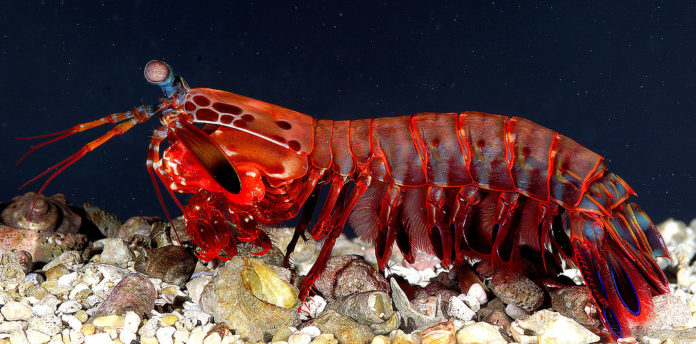
A shrimp of many colors, the mantis shrimp certainly brightens up the ocean. With long antennae, bulging eyes, red legs, and backs that glow green, you’d be forgiven for thinking that an alien had landed among us.
11. Monkfish
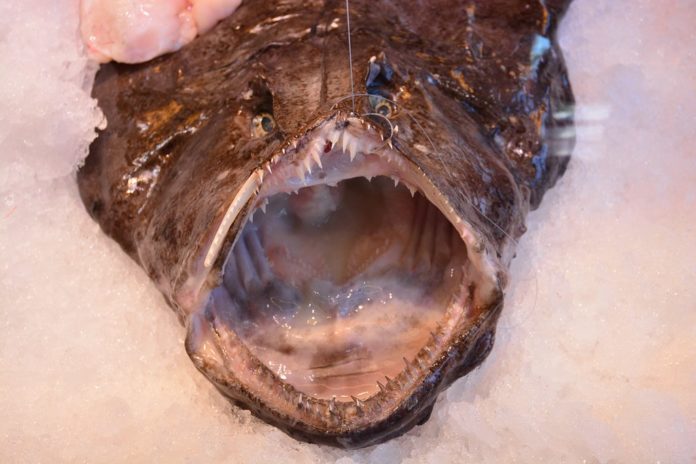
Scientific name: Lophious
Strictly speaking monkfish aren’t a deep-sea fish, although some species have been observed as deep as 1000 metres. They have wide flat mouths lined with many ranks of long pointy teeth; combined with a huge stomach, this enables them to attack prey as big as themselves and swallow it whole. It doesn’t turn down smaller fish though, and has a special bulb of flesh on his head which works as a bait to draw them in.
10. Sarcastic Fringehead
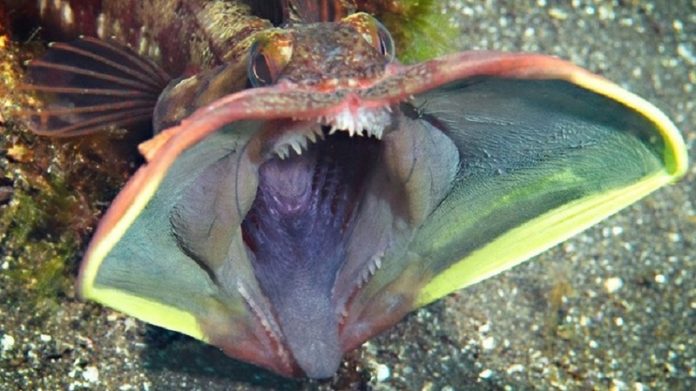
Although the sarcastic fringehead can’t actually do human beings any harm, it looks so grotesque that it would certainly give you a fright if you bumped into it when snorkeling, and the last thing you want to do is to panic when you’re in the water. It lives in the Pacific Ocean in the coastal stretch between Northern California and Mexico, so be prepared if you’re taking a dip out that way!
9. Japanese spider crab
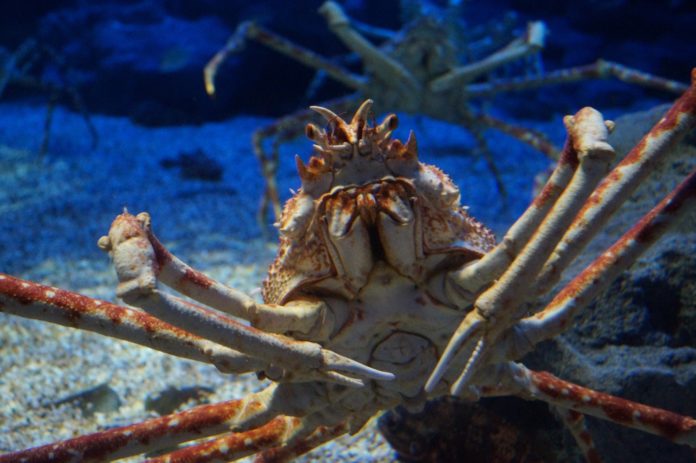
If you’re scared of spiders, how much more scary is a spider crab? Weighing up to 19 kg, they have the widest leg span of any invertebrate, measuring up to 5.5 m from one claw to another. If that’s not scary enough, think about the fact that, Terminator-style, they can keep going with up to three legs cut off, and not only that, they can actually grow those legs back afterward.
8. Barreleye
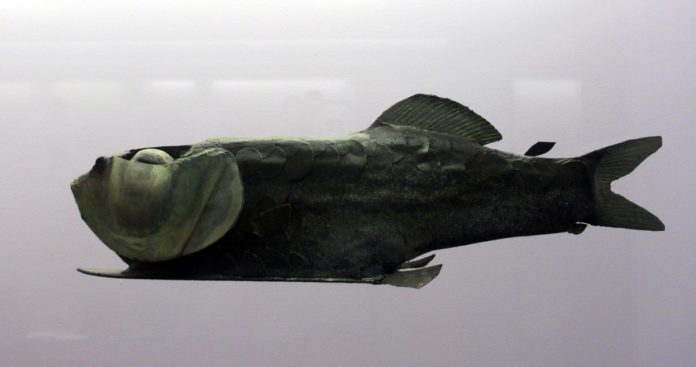
The barreleye is one of the strangest creatures you’ll ever come across. Found in the Atlantic, Pacific, and Indian oceans, it has a translucent head, which gives it virtually 360° vision so they can watch out for predators coming from any direction. As if that wasn’t enough, it actually emits a blue light, so that predators coming from below can’t see it against the blue background of the ocean surface.
7. Stargazer
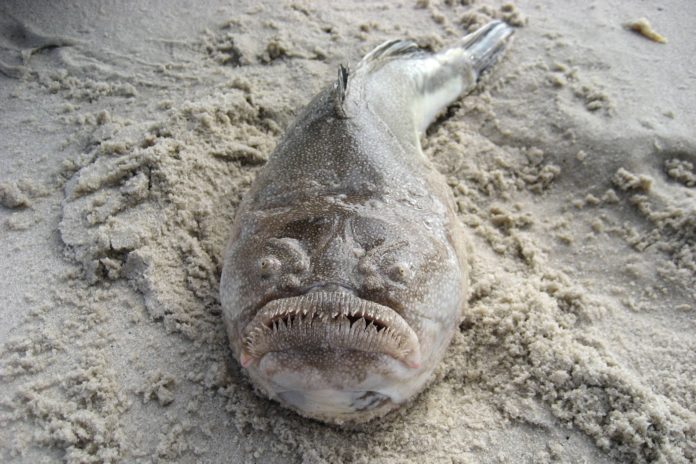
Scientific name: Uranoscopidae.
In name and appearance, the stargazer looks quite harmless compared to other creatures we’ve described. Don’t let that fool you though, it’s a cunning and vicious predator that camouflages itself in the ocean sands and sucks in unwary prey using its huge mouth. If that wasn’t enough, it’s got a pair of venomous spines and some species even have a special organ behind the eye with which they can give victims electric shocks.
6. Atlantic Wolffish
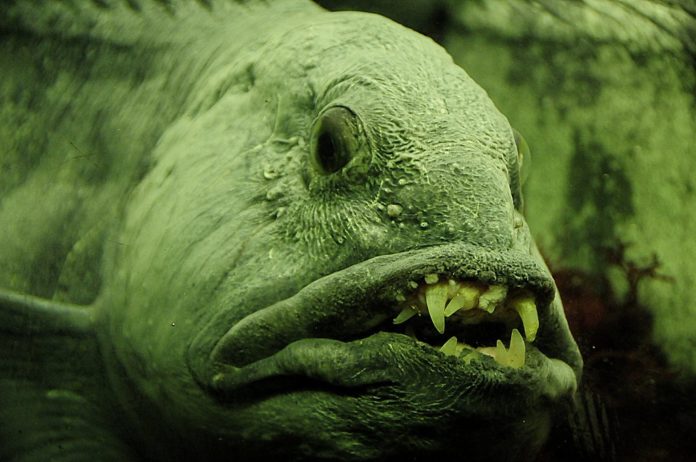
The Atlantic Wolffish lives in rocky coastal waters at depths of up to 500 m. It can grow up to a meter and a half long and has large teeth which allow it to feed on sea urchins, crabs, and mollusks. One extraordinary fact about the strange creature is that it actually produces its own antifreeze, allowing it to survive in the coldest ocean environments.
5. Frilled sharks
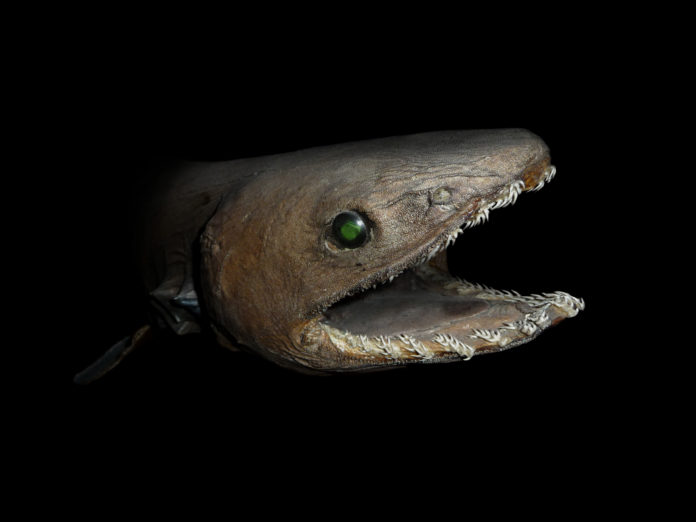
Looking like a throwback to the prehistoric age, the frilled shark is frequently called a “living fossil” because of its appearance. Living between 120 and 1580 meters deep in the Atlantic and Pacific, humans rarely see it, which might be a good thing when you learn that it has 25 rows of razor-sharp teeth, adding up to a total of 300.
4. Giant tubeworms
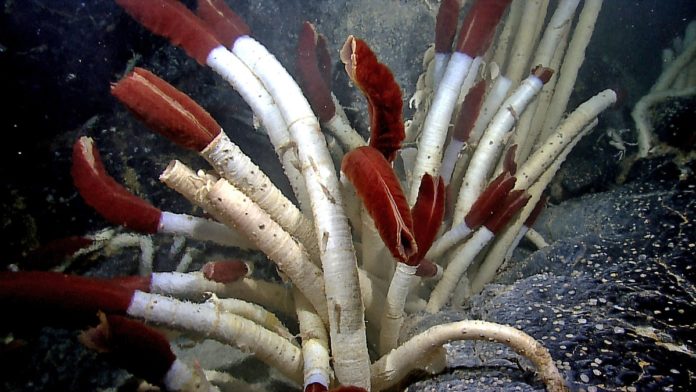
A miracle of evolution, giant tubeworms can survive incredible pressures, subzero temperatures, and a complete lack of sunlight. Not only that, they live on the fringes of hydrothermal vents, which spit out superheated water laced with toxic chemicals. This photograph was taken of a colony 1.5 miles deep in the East Pacific Rise close to the Galapagos Islands.
3. Goblin shark
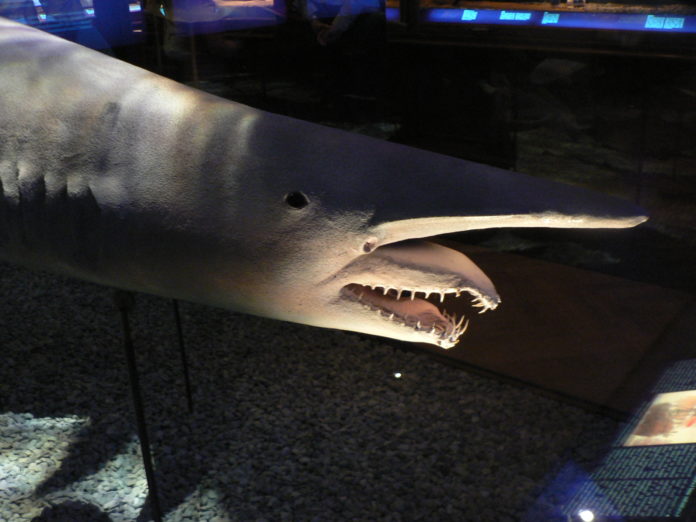
Another nightmare from the Stone Age, the goblin shark has a long snout and teeth like needles. You might figure you are out of its reach, but its jaws can extend way out in front of it to snap hold of prey. To complement its handsome face, the goblin shark has semi-transparent skin, allowing us to see straight into its insides.
2. Terrible-claw lobster
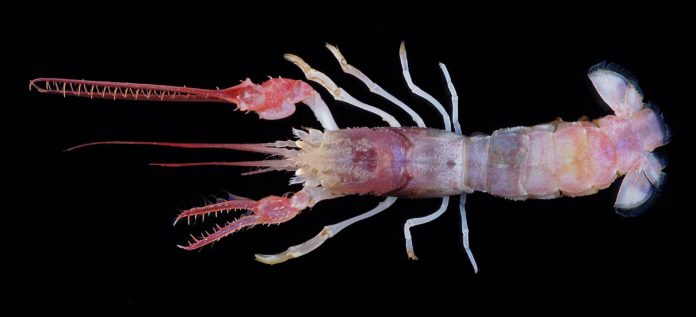
Scientific name: Dinocelus ausubeli
Inhabiting the sea around the Philippines, this lobster certainly has a pair of frightening-looking claws, however, they’re not much of a threat to humans, given that they are only about 31 mm long. However, you don’t want to get too close, because these lobsters are completely blind, so they’re likely to have a nip at anything that comes within range.































